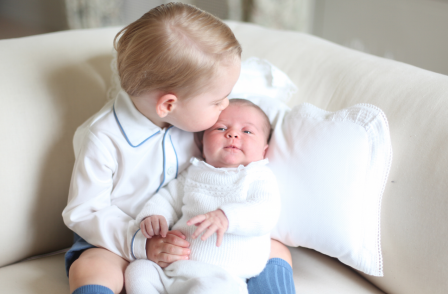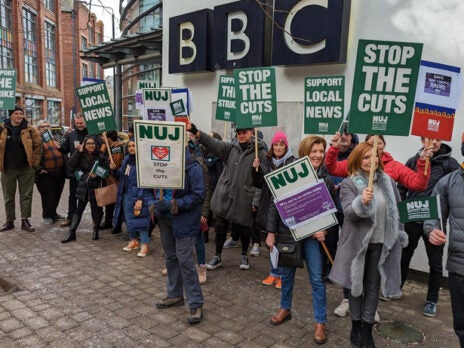
A letter from the Queen means you've reached the ripe old age of 100. A letter from Kensington Palace may mean you've overstepped the mark snapping pictures of a royal prince.
Kensington Palace was motivated this month to voice the discontent of the Duke and Duchess of Cambridge over the "increasingly dangerous" tactics being employed by paparazzi to obtain pictures of the cutie who is Prince George of Cambridge. While "almost all reputable publications" appear to be voluntarily holding off from photographing the boy without royal approval others are not playing the gam. Indeed, one photographer was found hiding out in the boot of a car draped with sheets and packed with tuck for a long day of surveillance.
But extreme examples aside, how is a pap to know if, when his target is a kiddy in plain public view, he may or may not click the shutter? When a unique photo can generate tens of thousands of pounds, the temptation to press may be unbearable. And while a photo editor may receive regular pics from the Palace (such as the one above), something un-staged and different from his competitors can sell magazines in their millions. To publish or not to publish, that is the question. But what is the answer?
Any number of people could complain over unauthorised, private pictures: you may be about to go into Narcotics Anonymous (Naomi Campbell); or you're protective of pics of you chowing down on your wedding cake (Catherine Zeta-Jones); you're naked on a closed film set (Sienna Miller); or you've been caught in a clinch playing away from home (too many footballers to mention). To have any hope of preventing these images from being breakfast-table fayre, the complainant must show that they have 'a reasonable expectation of privacy'. If they can't, then it's off to the bank for the pap, and hats off to the newspaper or magazine that publishes the scoop.
But what amounts to a reasonable expectation can be hard to discern – as the law likes to, it has grey and fuzzy areas. So try my version of the inverted pyramid –- my Kitchen Sink Test, because I throw everything in – the who, what, where, and how.
Who? A private or vulnerable person or a child? Alarm bells should sound more loudly than for a public figure or someone who courts publicity. If a child, consider whether their parents have previously consented to images of the child being used and/or put the child into the media spotlight.
What? The naked or semi-naked body, grief or shock, activities that are intrinsically private – even if in public – should sound an alarm. But it's not easy, and even a shopping trip in Los Angeles for Paul Weller and his children was considered sufficiently private so that pixilated photographs of the children were off limits.
Where? Ding ding ding, goes the alarm bell for private residences, gardens, other discreet areas, schools: the IPSO code provides that children should be "free to complete their time at school without unnecessary intrusion" and the consent of the school authorities is required for playground and other school pics.
How? A too-close camera in the face and a paparazzi scrum may be upsetting and harassing, but surreptitiously taken long-lens photos – especially one from the boot of a sinisterly decked out car which won't impress the court – is not necessarily any better if it is taken and published without consent.
Kitchen sink. At one end of the spectrum you may have a picture of a publicity hungry celebrity in public (OK); at the other end, a child in distress in their private garden captured, by a long lens (not OK).
A live debate of general interest on the subject matter may, notwithstanding the reasonable expectation of privacy, justify the publication. But while the story may be justified on those grounds, the image to illustrate it may not be.
A picture could land a photographer a healthy sum, and a publisher a nice boost in circulation. But if it concerns the offspring of a protective parent, an unlawful snap could cost, both in terms of legal fees and damages. "A picture paints a thousand words" crooned the lollypop loving TV cop, Telly Savalas; too true.
Amber Melville-Brown, head of Media & Reputation at Withers LLP
Email pged@pressgazette.co.uk to point out mistakes, provide story tips or send in a letter for publication on our "Letters Page" blog







